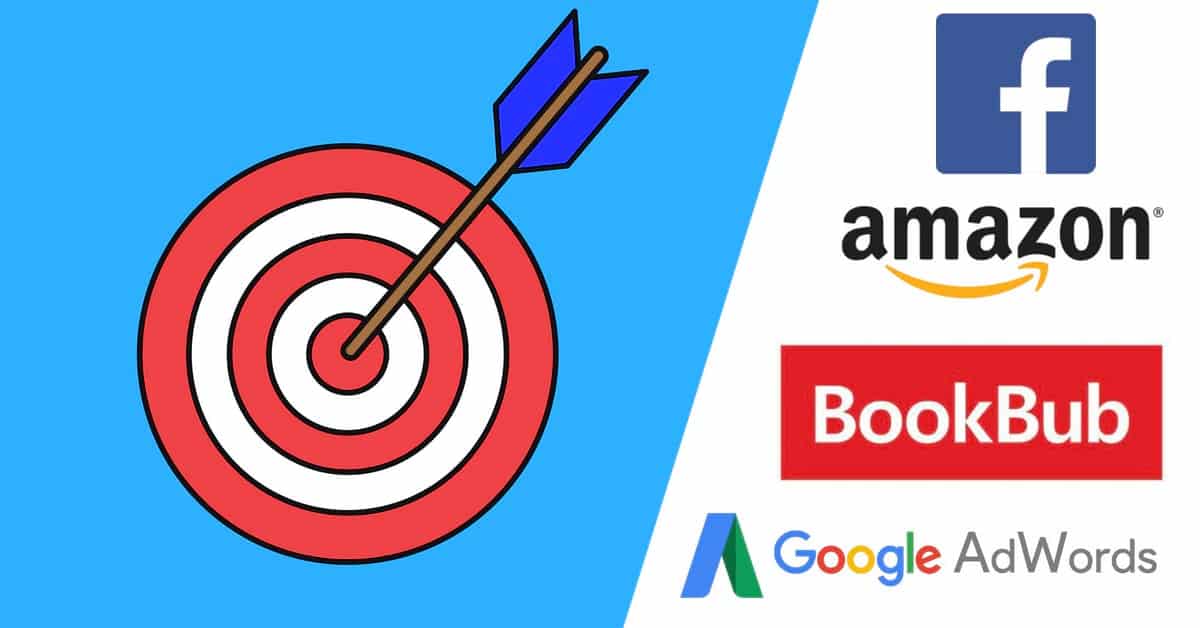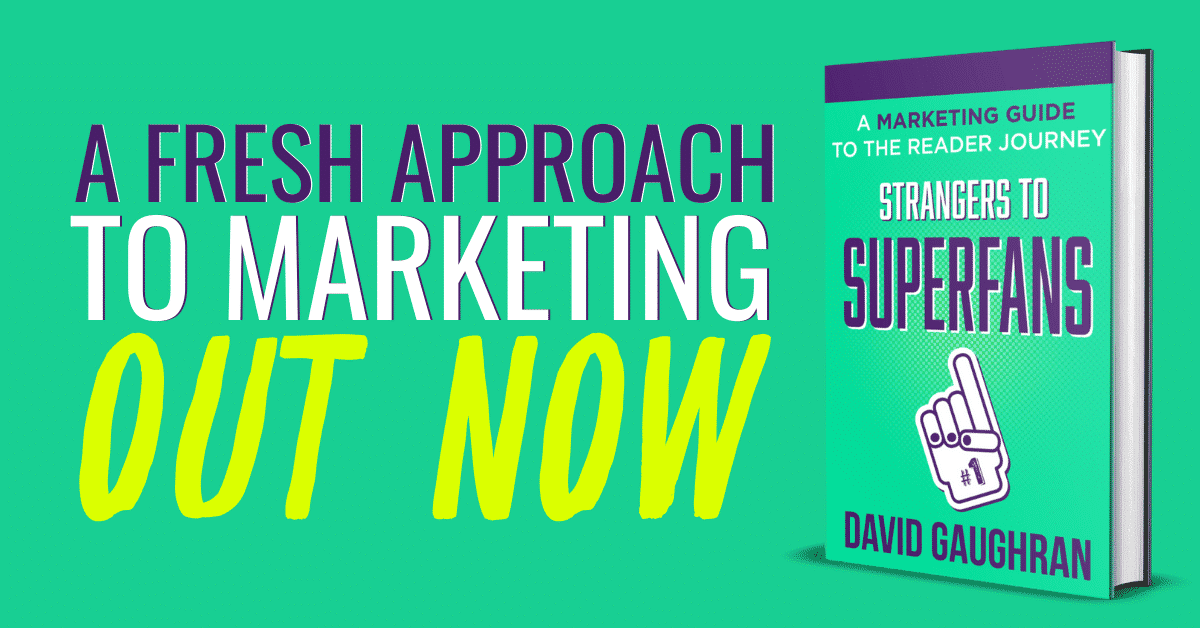
How To Market A Book | 2020 Edition
Figuring out how to sell books in 2020 means facing a pair of imposing challenges : the multiplying complexity of book marketing and — speaking of things rising exponentially — the global pandemic, which has led to lockdowns, recessions, as well as no small amount of tragedy.
And I want to focus on that second challenge for a moment — before we dive into all the ways that you can get your books into readers’ hands — because there is something rather different about this year.
Writers are generally quite fortunate in that they can work from home and sell books online and, for the moment at least, the digital side of the publishing business looks less exposed than the physical end.
Indeed, retailers and distributors are reporting a boost in ebook sales, and freebies in particular seem especially popular. Anecdotal reports concur, and also seem to confirm that there has been a surge in new entrants to the ebook market — which makes sense when people are stuck at home or less inclined to go browsing in meatspace, for painfully obvious reasons. Read More…

13 Ways To Increase Your Email Open Rate
Having a big email list is great, but utterly pointless if your open rate is in the toilet. Quantity might get the headlines but it’s quality which pays the bills.
You need engaged subscribers, ones that care about getting your emails, people who open your messages and act on the contents. If you are putting effort into growing your subscriber count but not proactively taking steps to assist open rates, then all you’re really doing is bailing out your boat with a leaky bucket.
People often say things like “it’s natural for open rates to fall over time” – and that’s true… if you do nothing about it. Also, there are plenty of practices you might inadvertently engage in which might accelerate the natural wastage you tend to get over time. But there’s also plenty you can do to address falling open rates and even reverse them. Read More…

7 Expert Tricks To Improve Your Author Newsletter
Authors these days are getting great at offering enticements to sign up – commonly known as magnets or bribes or sign-up bonuses – and also at deploying automated sequences to further warm-up new subscribers. But sometimes we can be a little… overeager.
Your first priority should be to keep the promise that you made to the reader, which means ensuring the subscription happens smoothly and they get their free ebook.
If you overload the first emails the subscriber receives, you might get dropped into Promotions or *gasp* Spam. If you’re lucky the subscriber will email you complaining they didn’t get their gift. If you’re lucky. Most probably won’t even bother complaining which means you’ve just lost a sign-up. Read More…

What The Piña Colada Song Teaches Us About Marketing
You may love it, you may hate it, but you’ve definitely heard it: The Piña Colada Song is one of the most recognizable and enduring hits of the last fifty years – the only song ever to hit No. 1 in America in two different decades.
But it almost sank without trace.
The artist behind it is Rupert Holmes, who is primarily known to many for penning this one tune, but he has led an interesting and varied life. While he currently lives in New York, Holmes was born in Cheshire in 1947 as David Goldstein – a US Army brat, with an American father and an English mother, the wonderfully named Gwendolen.
His was a very musical upbringing, and when the family were uprooted and moved to Nanuet, New York in the 1950s, he ended up attending the prestigious Manhattan School of Music and majored in the clarinet, although he didn’t follow his brother into the world of opera and “serious” music.
Instead, he became a session musician and did side-gigs like writing jingles for shampoo commercials. Holmes was delighted to be working in the music business at any level, but it also enabled him to support himself while working on his own music. In the early 1970s, he had a couple of minor hits under his own name, while also wrote songs for big stars like Dolly Parton, the Drifters, Gene Pitney, and the Partridge Family. Read More…

Email Marketing: Your Secret Weapon
There is no question that email marketing is the most powerful tool at your disposal; not taking advantage of all the unique benefits of email marketing is really missing a trick. Here’s why.
I’m sure all of you know the power of having thousands of committed readers signed up to your mailing list, allowing you to send each new release into the charts. Even if you’re not there yet personally, this should be something you are aiming for. Every single author should have a mailing list and be seeking to actively grow it.
But before we fly through the basics and delve into more advanced topics, let’s be clear about something: email marketing is not about spam. It’s not about fake intimacy. It’s not about posing BS questions to create false engagement. And it’s not about bait-and-switches, contrived urgency, click-baiting subject lines, or other emotional tricks; that’s what cheesy internet marketers do. Read More…

BookBub Ads – What the FAQ?
BookBub is a wonderfully passionate community of over ten million book buyers – and its ad platform is the only one at this scale which is exclusively made up of readers. BookBub Ads is unique in lots of other ways too and I’ve received hundreds of questions from authors over the last few months who are confused about one aspect or another. Today, we’ll look at the most frequent issues… and give you solutions to all those problems.
I’ve been using BookBub Ads for two or three years, I’ve been covering the platform in some depth for my mailing list for well over a year at this point, my dedicated book came out a few months ago, and the course… I can’t quite remember when that launched. Around the same time?
I’ve also run some giant campaigns for authors in a range of genres, as well as my own ads, and compared data and strategies with hundreds of other authors writing every kind of book imaginable. These are the issues and questions which come up most frequently. Read More…

Clever Tips For Using BookBub Ads
BookBub Ads is the platform where I’ve seen most growth in the last year, to the point where it is rivaling Facebook on some campaigns, especially when you factor in the higher conversion rates you usually see. This means that the amount of ad money I can spend effectively on BookBub — and by that I mean get an immediate return on investment — has quadrupled in the last twelve months.
This might sound incredible, in the literal sense, to anyone who hasn’t cracked BookBub Ads yet. It can be an unusual platform for those more used to Facebook or Amazon Ads, leading to an unexpected learning curve, perhaps. But I find that if you take the time to understand what works on BookBub, it’s the most responsive and consistent ad platform out there. Getting over that first hump is where many authors seem to struggle though. I know that from running an eight-part series on BookBub Ads to my mailing list earlier this year.
Well, there’s help on the way. I’ll have a book called BookBub Ads Expert coming very soon — make sure to sign up to my list to hear about that first and get an exclusive launch discount that will be offered nowhere else — and I have a wonderful guest post today to give you a headstart while you’re waiting for that. Read More…

Granular Targeting Explained
I’m pretty experienced with digital advertising at this point but when I got my interview for Google AdWords back in 2003 I had to… Google it to figure out what they did. And I still got it wrong!
I was quite lucky that I first interviewed with Overture (the former name of the digital advertising division of Google’s one-time rival, Yahoo) because I had absolutely no idea how these kind of ad platforms worked, let alone best practices. But I learned fast—Google’s training was excellent.
One thing that was drilled into us constantly was the importance of granular targeting. It might be a little more obvious in 2018, but back then the only really familiar advertising model was the broadcast one. Put your message in giant letters on the billboard. Flood the airwaves with ad spots. Take out full page ads in newspapers and magazines (for the kids: these are paper versions of websites that used to be popular). The basic strategy was a simple, brute force one; if the signal is strong enough, the right people will hear it. Read More…

How To Use The Reader Journey To Create Superfans
It’s almost exactly a year since I gave a talk at a conference in Austin which introduced a concept I call “The Reader Journey” – which is a bookish version of a new marketing paradigm that is helping companies understand their customers better, and how to tailor their marketing accordingly.
I’ve spent the last twelve months researching and testing and experimenting, and then organizing all this information into a structure which will help you understand exactly who you are writing for, plus how to sway them with your marketing messages. But also how to treat them after you have convinced them to buy. How to turn them into the kind of superfans that will do the selling for you.
Strangers to Superfans: A Marketing Guide to The Reader Journey is out now and you can pick up your copy from all these lovely retailers: Read More…
^
